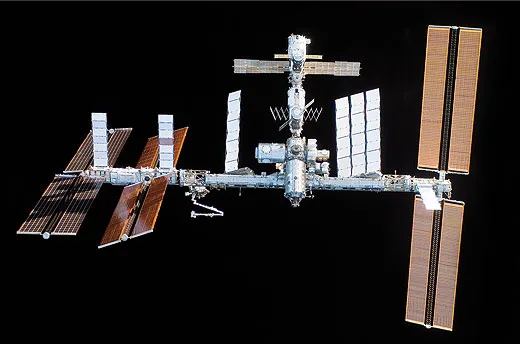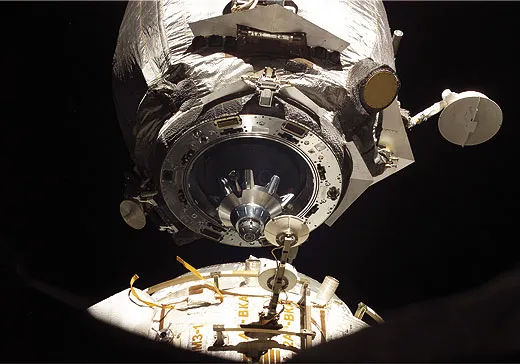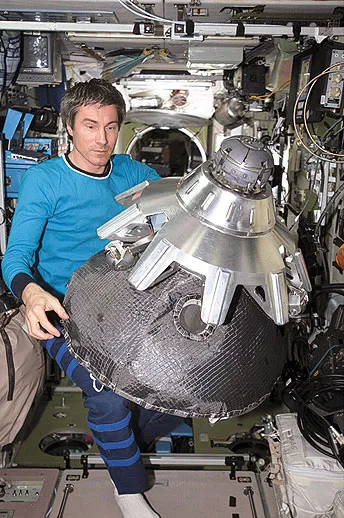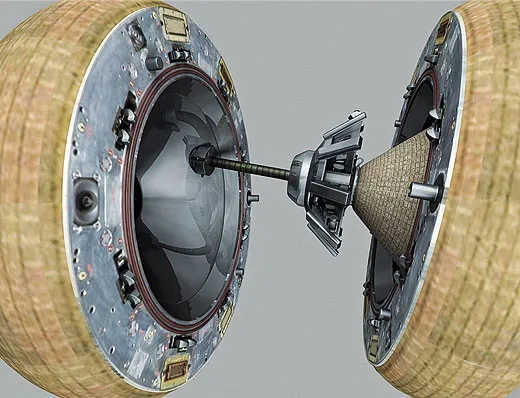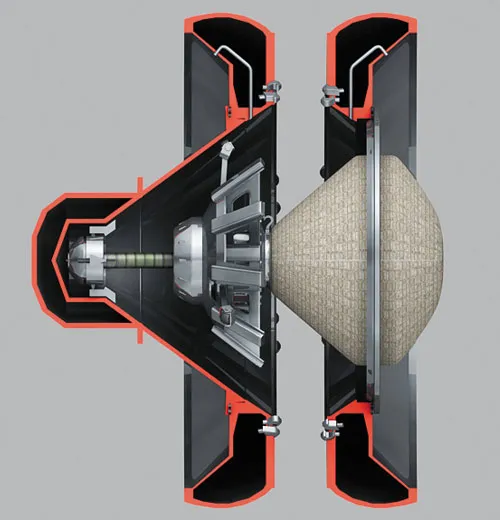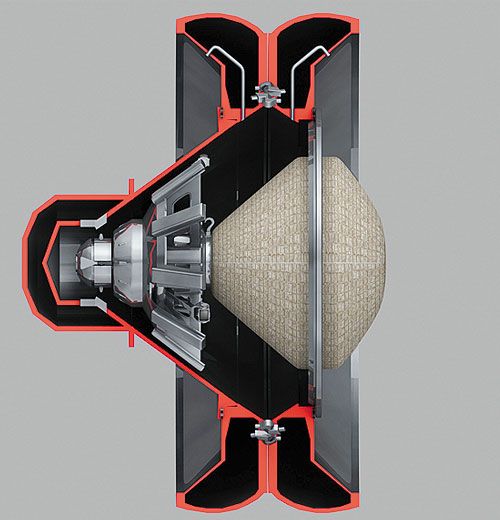How Things Work: Soyuz-Station Docking
In orbit, it’s all about connections.
/https://tf-cmsv2-smithsonianmag-media.s3.amazonaws.com/filer/FM-2011-how-things-work-2-FLASH.jpg)
A near-perfect history of hooking up in space
The glitch that kept a Soyuz spacecraft docked to the International Space Station last fall, when its crew tried to come home, wasn’t the first. Back in March 1966, when Neil Armstrong and Dave Scott linked their Gemini VIII capsule to an Agena target vehicle—the first docking in space—both craft began tumbling out of control, forcing a mission abort. The fault lay not with the docking mechanism, but with a stuck thruster on the crew capsule. Docking was key to the success of the Apollo moon landings, enabling a command module and a lunar module to travel together, disconnect, and reconnect.
The Soviets’ first manned docking attempt failed, but the second, Soyuz 4 and 5, in January 1969, succeeded. Dockings with the Salyut space station followed, as did U.S. dockings with Skylab. In 1975, Americans and Soviets linked up in the Apollo-Soyuz Test Project, and in the late 1990s with space shuttle-Mir dockings. Today, the shuttle and Soyuz bring people to the ISS, while the unmanned Russian Progress, European Automated Transfer Vehicle (ATV), and Japanese H-II Transfer Vehicle (HTV) bring cargo. The shuttle also brings Multi-Purpose Logistics Modules (MPLM), which get berthed to the station by a robotic arm. In 2011, SpaceX hopes to be the first U.S. business to connect a vehicle to the ISS.
How many docking ports are on the station?
Five active ones: four for Russia’s Soyuz and Progress craft, one of which takes the ATV, and a fifth for the shuttle. Several larger common berthing ports accept the HTV, MPLM, and permanent ISS nodes.
What’s the difference between the Soyuz-Progress docking port and the shuttle port?
Soyuz, Progress, and ATVs use the classic “probe-and-drogue” design. This resembles Apollo hardware, and some mid-air refueling systems, where a probe is guided into a cone, then a latch closes. The probe then retracts to pull the two spacecraft together. The shuttle’s system, though, derives from Apollo-Soyuz, designed to prevent either country’s craft from appearing dominant. More “androgynous” and symmetrical, the docking mechanism is an extended ring on the shuttle, with shock absorbers. This gets pressed into the ISS port, and after motion is dampened, pulls the shuttle firmly to the ISS.
Michael Klesius is an associate editor at Air & Space/Smithsonian.
